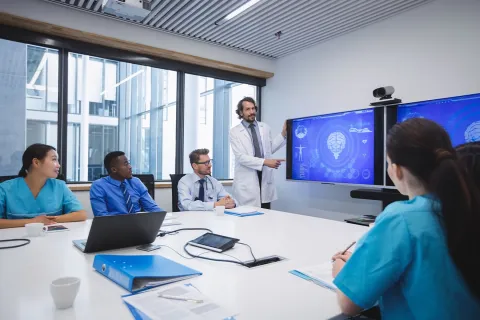Handling and mitigating extractables and leachables (E&L) risks is a critical aspect of pharmaceutical product development. Extractables and leachables are compounds that affect the drug products and compromise their safety or efficacy. The blog explores best practices for identifying, evaluating, and mitigating E&L risks in drug product development.
Key differences between Extractables and Leachables
| Factor | Extractables | Leachables |
|---|---|---|
| Definition | Extractables are potential impurities released from a material when it is exposed to solvents under laboratory conditions. | Leachables are the impurities that migrate into the drug product over its shelf life and storage. |
| Regulatory Focus | Focus on worst-case scenarios and potential risks | Focus on actual impact on drug product safety, efficacy, and stability |
| Importance | Helps in anticipating and preventing potential risks | Critical for ensuring ongoing compliance and safety of the drug product |
| Detection Method | Identified through controlled extraction studies (e.g., GC-MS, LC-MS) | Detected during stability studies (e.g., GC-MS, LC-MS) |
| Types of compounds detected | Plasticizers, antioxidants, stabilizers, lubricants | Degradation products, additives, container closure system materials |
Some challenges and solutions* for extractables & leachables handling:
- Identification of E&L
- Challenge: Identifying all potential extractables and leachables is challenging due to the complex nature of packaging and delivery systems.
- Solution: Comprehensive analytical testing using advanced techniques like GC-MS, LC-MS, and ICP-MS is necessary to identify a wide range of chemical compounds.
- Evaluating E&L Risks:
- Challenge: Assessing the toxicity and impact of identified E&L compounds on drug product safety and efficacy requires extensive research and Regulatory understanding.
- Solution: Conducting toxicological risk assessments based on established guidelines (such as those from ICH and USP) can help evaluate the potential risks.
- Regulatory Compliance:
- Challenge: Ensuring compliance with global Regulatory requirements for E&L testing and reporting is complex and varies by region.
- Solution: Staying updated with Regulatory guidelines and working closely with Regulatory agencies can ensure compliance and streamline the approval process.
Best Practices for Handling E&L Risks
- Early Integration of E&L Assessments:
- Integration of E&L assessments early in the development process to identify and mitigate risks before they become critical.
- Use risk-based approaches to prioritize materials and components for E&L testing.
- Comprehensive Analytical Testing:
- Employ a combination of analytical techniques to detect a broad spectrum of potential E&L compounds.
- Regularly update testing methods to incorporate the latest advancements in analytical technology.
- Thorough Toxicological Evaluations:
- Conduct detailed toxicological evaluations of identified E&L compounds to assess their potential impact on product safety.
- Use in-silico models, in-vitro assays, and in-vivo studies as part of the evaluation process.
- Continuous Monitoring and Reassessment:
- Implement ongoing monitoring of E&L during the product lifecycle to detect any new leachables that may arise from changes in manufacturing processes or storage conditions.
- Reassess E&L risks periodically and update risk management strategies accordingly.
Effective management of extractables and leachables (E&L) risks is essential to ensure the safety and efficacy of pharmaceutical drug products. By integrating best practices and leveraging the expertise of Regulatory experts in dynamic regulatory scenarios, sponsors can mitigate E&L risks, ensuring compliance and protecting patient safety.
*Challenges and solutions are subject to change and are bound by regulations from health authorities and skillsets possessed by technical professionals.










